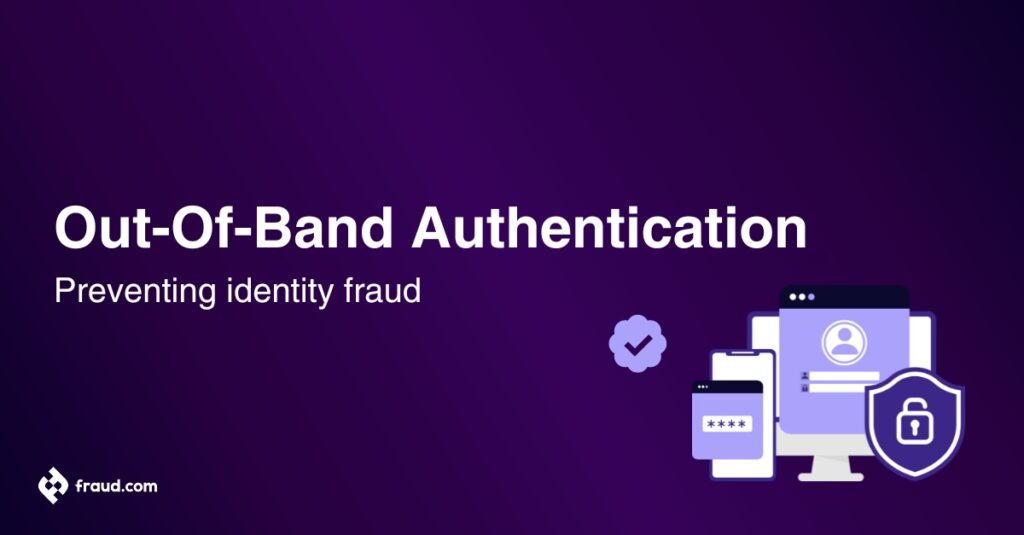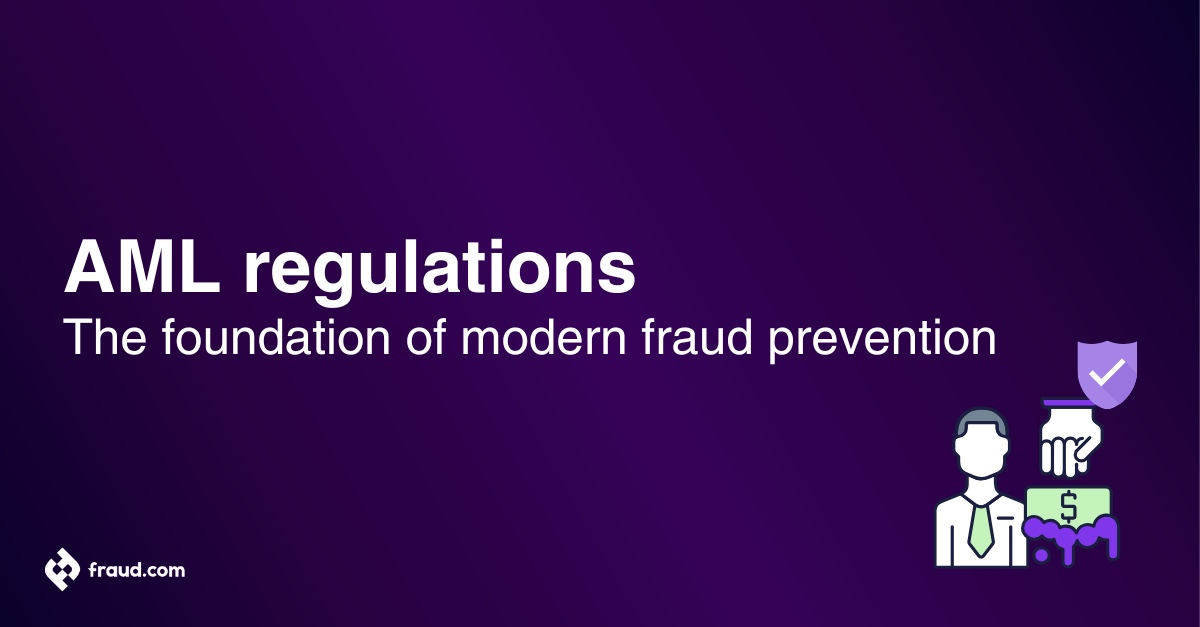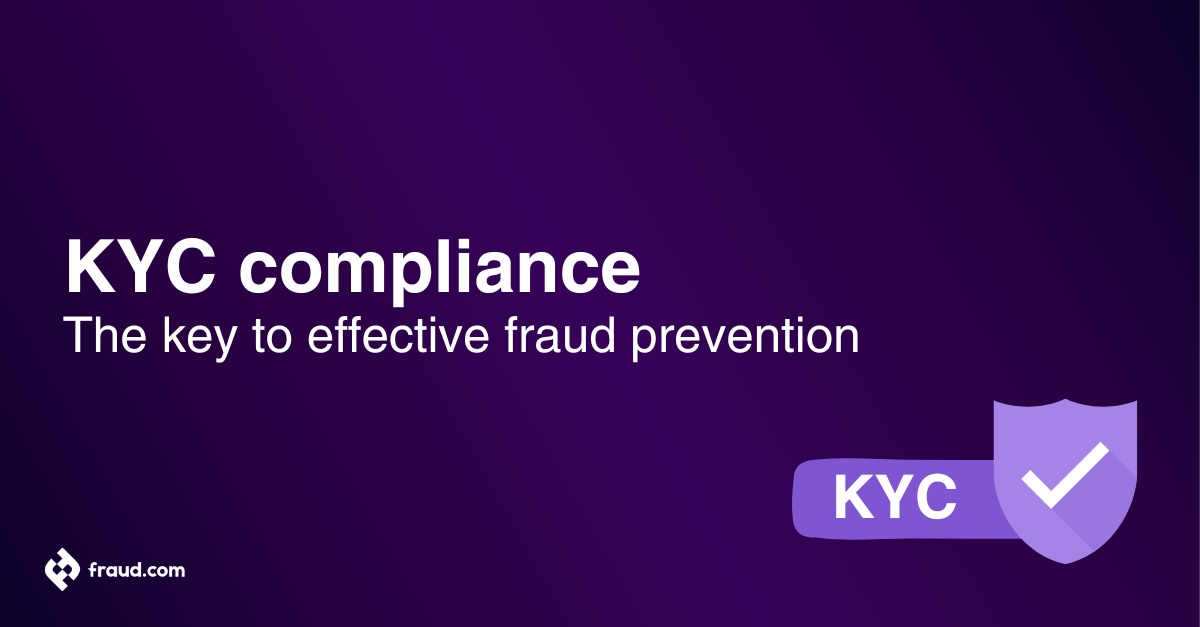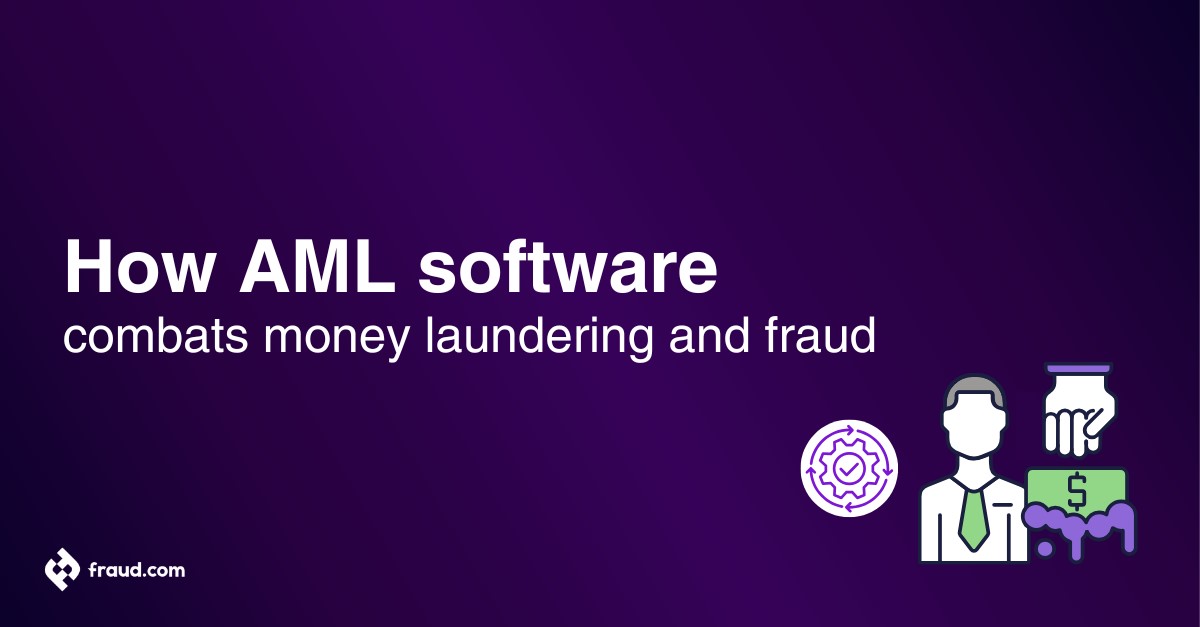As cyber threats and fraud become more sophisticated, the need for secure and reliable identity verification and authentication has never been more critical. Out-Of-band Authentication (OOBA) provides a robust safeguard by adding an extra layer of verification that goes beyond traditional methods. This approach makes it significantly harder for fraudsters to commit identity fraud and other types of fraud, offering enhanced protection for sensitive information.
In this article, we will explore how out-of-band authentication works, its effectiveness in preventing fraud, and practical strategies for implementation. Learn how this advanced technique can fortify your security measures and protect against unauthorized access.
Table of Contents
ToggleWhat is Out-Of-Band Authentication (OOBA)?
Out-of-Band Authentication (OOBA) verifies a user’s identity through a separate, independent communication channel, adding an extra layer of security against unauthorized access and identity fraud. It’s considered a form of Two-Factor Authentication (2FA) because it requires verification beyond the primary method.
Unlike traditional 2FA, which may use the same device for both steps, OOBA uses a completely separate channel, such as a phone call or text on a different device, after the user enters their password. This independent method ensures that even if the primary channel is compromised, the added layer makes it much harder for fraudsters to commit identity fraud, offering stronger protection for accounts and sensitive transactions.
How does Out-Of-Band Authentication work?
OOB Authentication verifies a user’s identity using a separate channel. This method increases security and reduces the chances of unauthorized access and identity theft. Here’s a step-by-step overview of how this advanced authentication method works:
- Initial access attempt: The user starts by logging in or initiating a transaction on a primary channel, such as a banking website or an email login page.
- Primary credentials submission: The user enters their primary credentials, like a username and password. While this alone would be sufficient in traditional authentication, out-of-band authentication adds an extra step for enhanced security.
- Triggering the out-of-band verification: After the primary credentials are entered, the system sends a verification request to a different channel. This could be an automated phone call, a text message, or a push notification to a mobile app.
- Verification via independent channel: The user must respond to this verification prompt through the independent channel. This might involve entering a code received via SMS, answering a security question over the phone, or approving a notification on a mobile app. The key is that this channel is different from the one used for the initial access attempt.
- Confirmation of identity: Once the user successfully completes the verification step, the system checks the provided information to confirm their identity. If everything matches, the user gains access to their account or completes the transaction.
- Security monitoring: During this process, the system keeps an eye out for any suspicious activities. If it detects any anomalies, such as attempts to intercept the verification code, it can flag or block the access attempt for added protection.
By incorporating this method, organizations can significantly enhance their security measures. Out-of-band authentication makes it much harder for fraudsters to gain unauthorized access, even if they have compromised the primary credentials. This approach not only boosts user confidence but also strengthens defenses against identity fraud.
How Out-Of-Band Authentication enhances identity fraud prevention
OOB authentication strengthens identity fraud prevention with several key features:
- Dual-channel security: OOBA requires verification through an independent channel, making it difficult for fraudsters to compromise both channels.
- Mitigation of Man-in-the-Middle attacks: OOBA utilizes separate communication paths to prevent attackers from intercepting and manipulating the authentication process.
- Real-time alerts: OOBA prompts immediate user action, such as responding to a push notification, which helps detect and respond to unauthorized access attempts quickly.
- Reduced impact of data breaches: OOBA requires access to the secondary verification channel, limiting the value of stolen credentials and minimizing breach damage.
- Behavioural anomaly detection: OOBA triggers additional verification for unusual activities, adding an extra layer of security.
- Layered security approach: OOBA complements other security measures, such as biometrics, to create a comprehensive defense strategy.
- Enhanced user trust: OOBA boosts user confidence by demonstrating a commitment to robust security.
Who uses Out-of-Band Authentication?
Out-of-band authentication is widely used across various industries to enhance security:
- Financial institutions: Banks and financial services use it to secure online banking and transactions, protecting against fraud.
- Corporations: Large organizations implement it for secure access to networks, systems, and high-risk actions.
- E-commerce platforms: Online retailers use it to prevent unauthorized purchases and protect customer accounts.
- Healthcare providers: It secures patient data and access to electronic health records, ensuring compliance with regulations.
- Government agencies: Used to protect sensitive data and secure access to public services and online portals.
- Telecommunications companies: Telecom providers use it to secure customer accounts and prevent unauthorized changes.
These industries rely on Out-Of-Band authentication to ensure that only authorized users can access critical systems and information. In the next section, we’ll delve deeper into specific examples of how OOBA is implemented in these industries.
Out-Of-Band Authentication examples
Out-Of-Band Authentication is employed in various scenarios to enhance security. Here are some common examples of how it is implemented across different platforms:
OOBA in banking and financial services:
- SMS verification codes: When a user attempts to log in to their online banking account, the bank may send a One-Time Password (OTP) via SMS to the user’s registered mobile number. The user must then enter this code on the website to complete the login process, ensuring that access is granted only if the person has both the account credentials and the phone.
- Phone call verification: For high-value transactions, a bank might place an automated call to the user’s registered phone number. During the call, the user is asked to confirm or deny the transaction, adding an extra layer of security.
OOBA in corporate security:
- Email or app-based confirmation: In corporate environments, Out-Of-Band authentication may involve sending a confirmation request to the user’s work email or a secure authentication app. The user must approve the request before gaining access to sensitive systems or data, ensuring that even if their primary login details are compromised, unauthorized access is still prevented.
- Hardware token authentication: Some organizations use hardware tokens that generate a unique code every few seconds. After logging in with their username and password, the user must enter the code from the hardware token, which is verified via a different channel than the one used for the login.
OOBA in e-commerce and online payments:
- Payment confirmation via mobile app: When making an online purchase, a user might receive a notification on their banking app asking them to confirm the transaction. This out-of-band verification step ensures that even if a fraudster has obtained the user’s card details, they cannot complete the transaction without access to the user’s mobile device.
- Two-Factor Authentication (2FA) for account access: E-commerce platforms often require users to enter an OTP sent to their phone or email when logging in or making significant account changes, such as updating payment methods or changing passwords.
OOBA in government services:
- Secure access to online portals: For accessing government services online, users might need to enter an OTP sent via SMS or email in addition to their regular login credentials. This ensures that even if someone obtains a user’s government ID and password, they cannot access sensitive information without the second form of authentication.
- Identity verification for tax filing: When filing taxes online, users may receive a verification code on their registered mobile number or email, which they must enter to confirm their identity and complete the filing process securely.
These examples illustrate the versatility and effectiveness of out-of-band authentication across different sectors. By requiring verification through an independent channel, this method provides a robust defense against unauthorized access and fraud, ensuring that only legitimate users can complete sensitive transactions or gain access to important accounts.
What is Out-of-Band in Banking?
In banking, Out-Of-Band refers to security measures that use a separate communication channel to verify a customer’s identity. For example, when a customer logs into their online banking account, the bank might send a One-Time Password (OTP) via SMS or make an automated phone call to confirm the login. This extra step helps ensure that even if someone obtains the customer’s login credentials, they cannot access the account without also having access to the separate channel, typically a phone or email.
What is an Out-of-Band transaction?
An Out-Of-Band transaction involves verifying a transaction through a separate communication channel before it is processed. For instance, if a customer initiates a large transfer online, the bank may send a confirmation request via SMS, email, or phone call. The customer must approve the transaction through this independent channel to complete it, adding an extra layer of security to protect against fraud and unauthorized transactions.
Out-of-Band Authentication methods
Out-of-Band Authentication enhances security by requiring verification through a separate communication channel, adding an extra layer of protection against threats like credential theft or Man-In-The-Middle Attacks. Here are some common methods:
- SMS verification codes: A One-Time Password (OTP) is sent via text message to the user’s registered mobile number. The user must enter this code to verify their identity, adding a layer of security against access to compromised credentials.
- Phone call verification: The user receives an automated phone call to confirm their identity or approve a transaction. This method uses a separate communication channel, reducing the risk of unauthorized access, even in cases of phone theft.
- Email verification: A verification link or code is sent to the user’s email address. The user must click the link or enter the code to complete the authentication process, securing access via a different channel.
- App-based authentication: A push notification is sent to a secure authentication app on the user’s mobile device. The user approves the request within the app, often using additional biometric methods like a fingerprint scan or QR code scan to confirm their identity.
- Hardware tokens: The user has a physical device that generates a unique code every few seconds. This code must be entered during the login process, providing a secure communication method independent of the primary channel.
These methods ensure that even if the primary communications channel is compromised, the additional layer of verification makes it much harder for attackers to gain unauthorized access.
Benefits of Out-of-Band Authentication
Out-Of-Band Authentication offers several key advantages:
- Enhanced security: By using a separate channel for verification, it’s much harder for attackers to compromise both channels, reducing the risk of unauthorized access.
- Protection against credential theft: Even if primary credentials are stolen, out-of-band authentication adds an extra layer of protection.
- Real-time fraud prevention: It helps stop fraudulent activities in real-time by alerting users to unexpected verification requests.
- User-friendly: Methods like push notifications or calls are quick and intuitive, adding security with minimal user disruption.
- Versatile application: It’s effective across platforms like banking, corporate networks, and e-commerce.
- Regulatory compliance: Helps meet data protection requirements and builds user trust.
Drawbacks of Out-of-Band Authentication
While effective, out-of-band authentication has some challenges:
- Device dependence: Requires access to multiple devices, which can be inconvenient if one is unavailable.
- User experience impact: Extra verification steps can be seen as inconvenient and may frustrate users.
- Channel compromise risk: The independent channel can also be targeted by fraudsters, compromising security.
- Cost: Implementing and maintaining this method can be costly, especially for large organizations.
- Social engineering vulnerability: Attackers can cause social engineering attacks by exploiting customer service to redirect verification prompts.
- Signal issues: Mobile-dependent methods may be unreliable in areas with poor signal, causing delays.
Balancing these benefits and drawbacks is crucial for effective security implementation.
Other authentication methods
Beyond out-of-band authentication, here are some common methods:
- Password-based: Simple but vulnerable if passwords are weak or reused.
- Biometric: Uses fingerprints, facial recognition, or iris scans for secure, convenient access.
- Two-Factor Authentication (2FA): Combines a password with a second factor like a mobile device or biometric trait for added security.
- Multi-Factor Authentication (MFA): Involves more than two verification methods, enhancing security further.
- Token-based: Requires a unique code from a physical or software token, adding an extra security layer.
These methods can be used alone or together to strengthen security.
Strengthen OOBA security with Udentify
Enhancing your security with Out-of-Band Authentication (OOBA) and robust identity verification is essential in today’s digital landscape. Udentify by fraud.com simplifies this process, offering advanced OOBA features and reliable identity verification to protect against unauthorized access and identity fraud.
By integrating Udentify, you can fortify your defenses, ensuring robust protection while maintaining user trust. Safeguard your digital environment with Udentify, allowing you to focus on growing your business with confidence.
Out-Of-Band Authentication FAQ
| Question | Answer |
|---|---|
| What is Out-of-Band Authentication (OOBA)? | OOBA is an authentication method that uses a separate communication channel, like a phone call or SMS, to verify a user’s identity, adding an extra layer of security. |
| How does OOBA prevent identity fraud? | By requiring verification through an independent channel, OOBA makes it much harder for attackers to gain unauthorized access, even if primary credentials are compromised. |
| Is OOBA the same as Two-Factor Authentication (2FA)? | OOBA is a type of 2FA, but it specifically involves using a separate communication channel for the second verification step. |
| What industries benefit from OOBA? | OOBA is widely used in banking, e-commerce, corporate security, healthcare, and government services to protect sensitive information and transactions. |
| Can OOBA be combined with other security methods? | Yes, OOBA can be integrated with other methods like biometrics and multi-factor authentication for enhanced |









